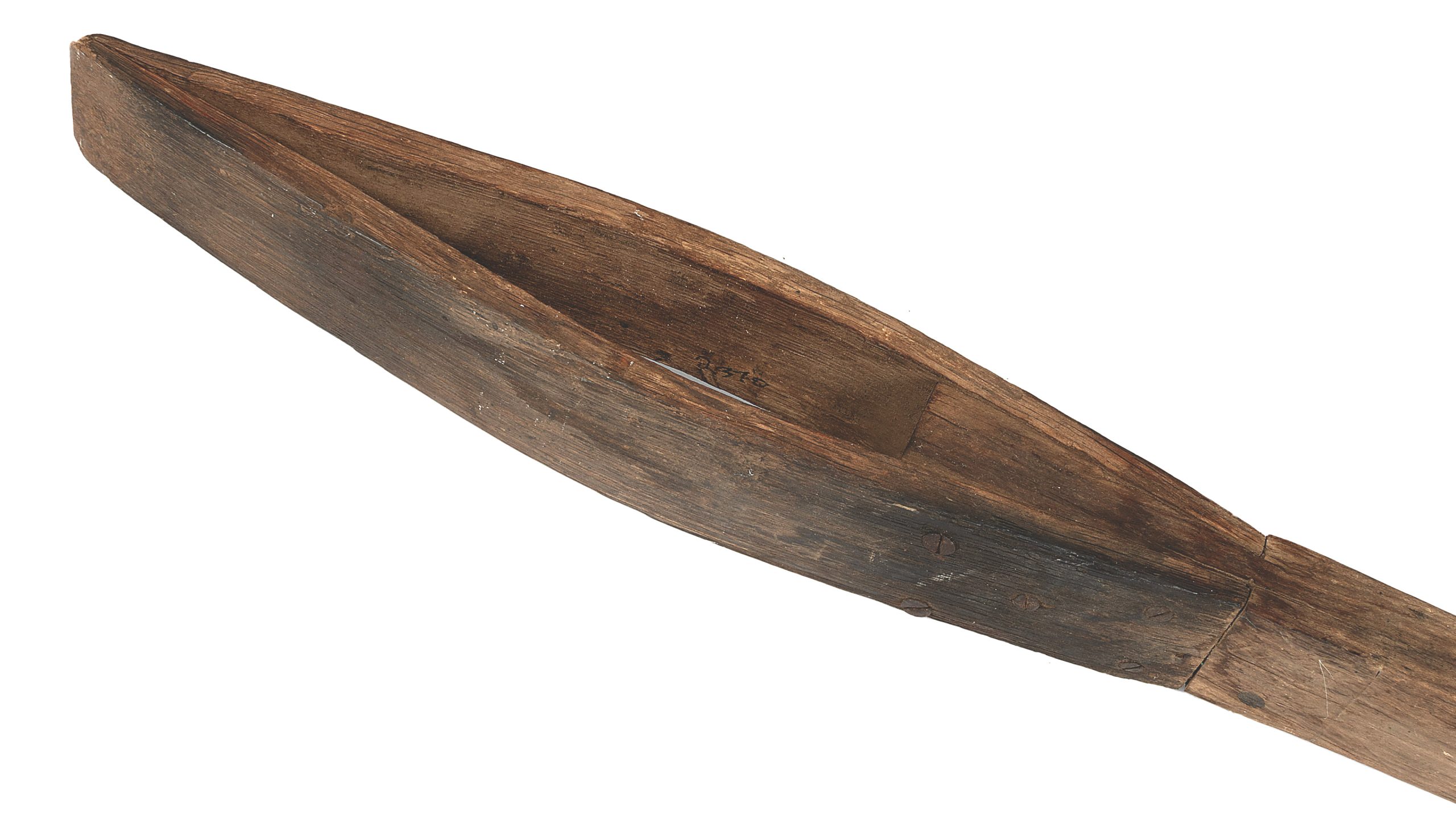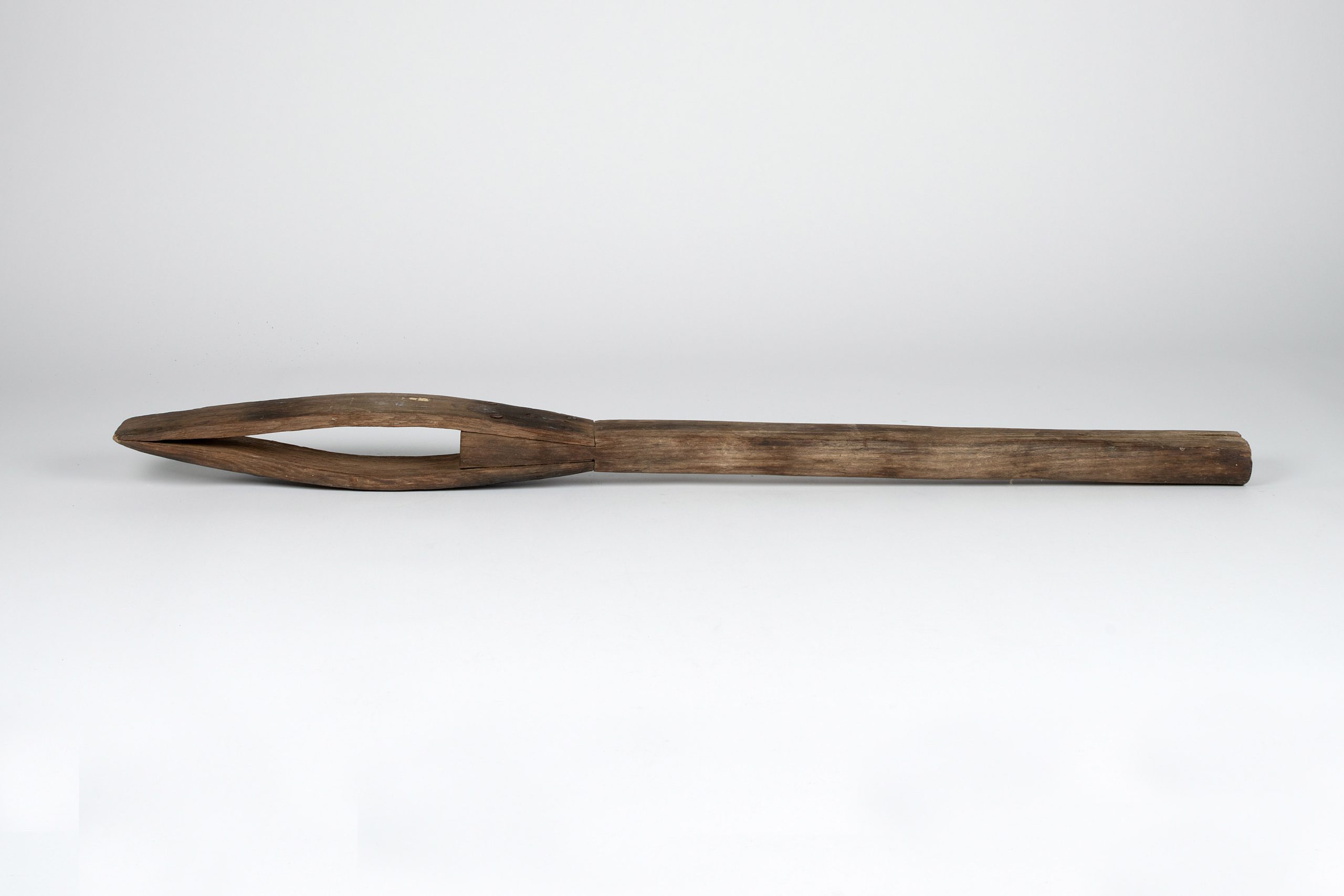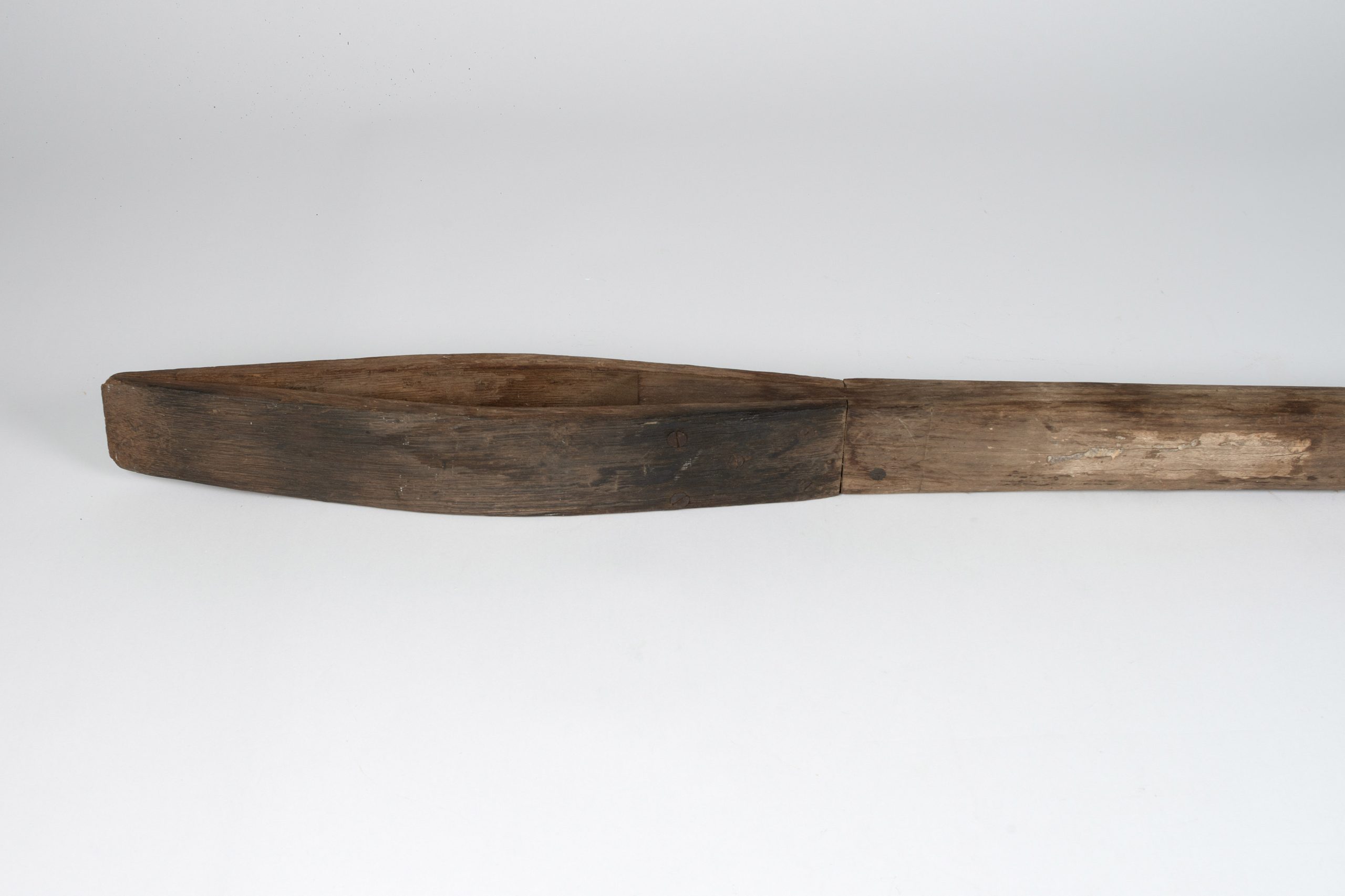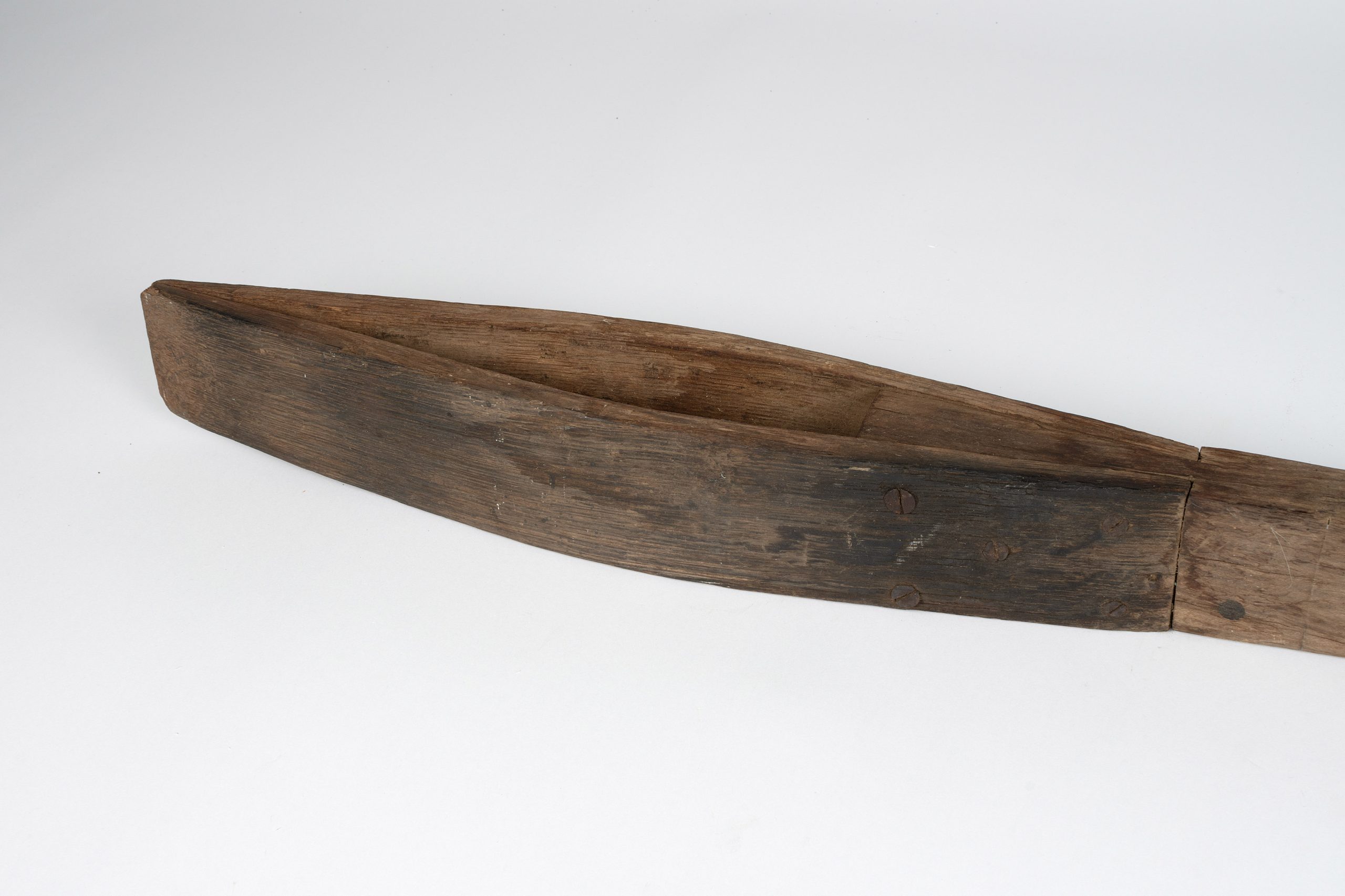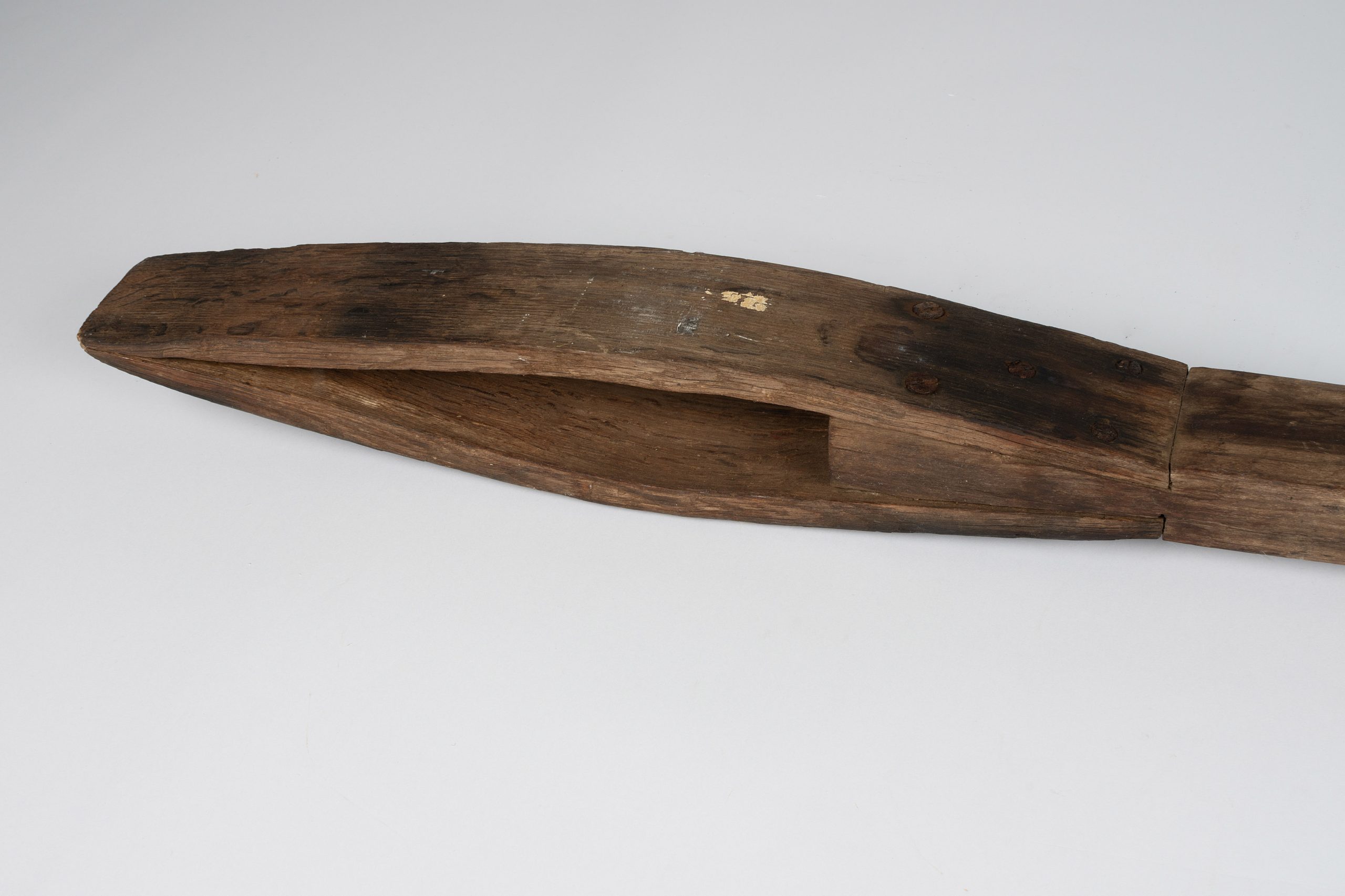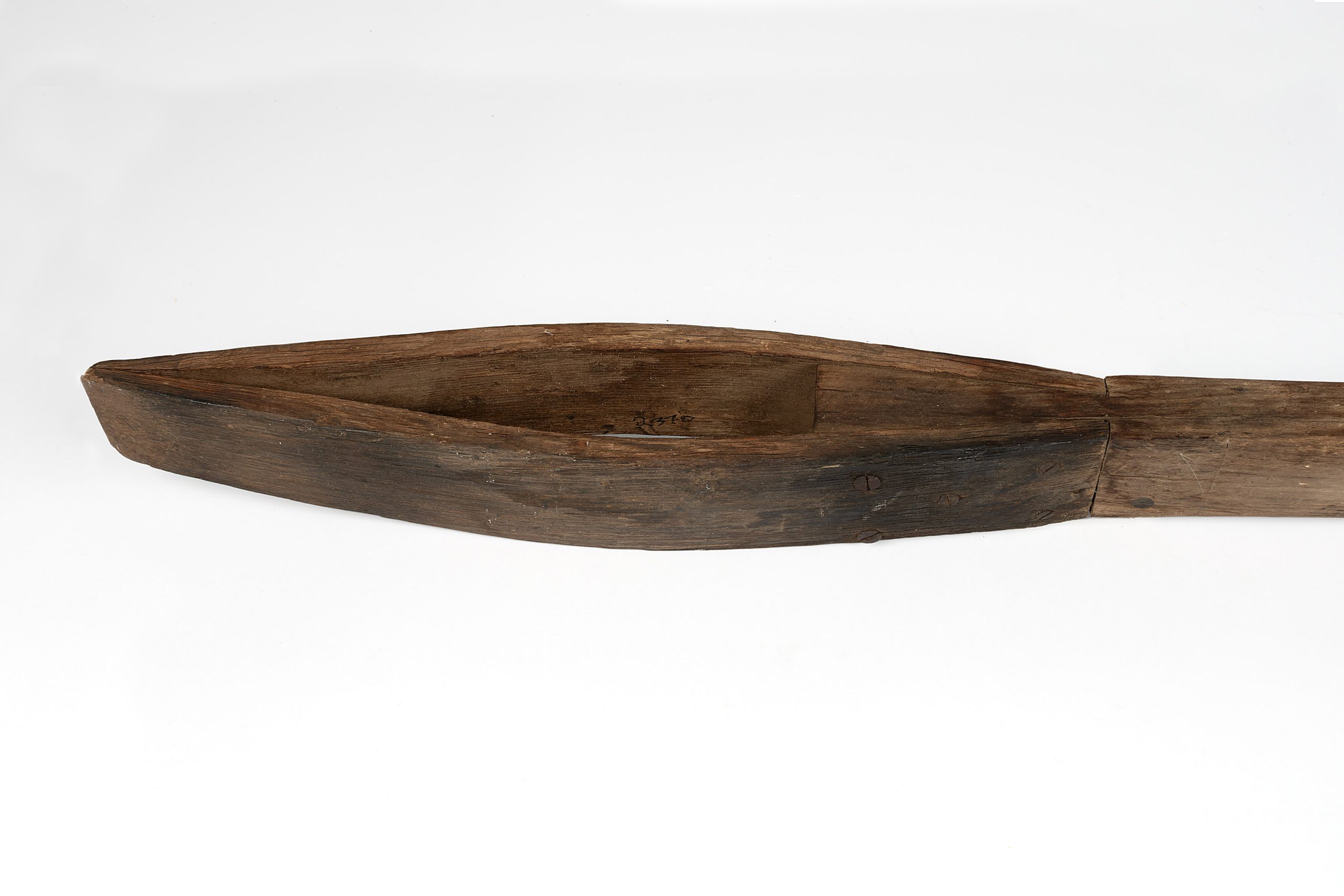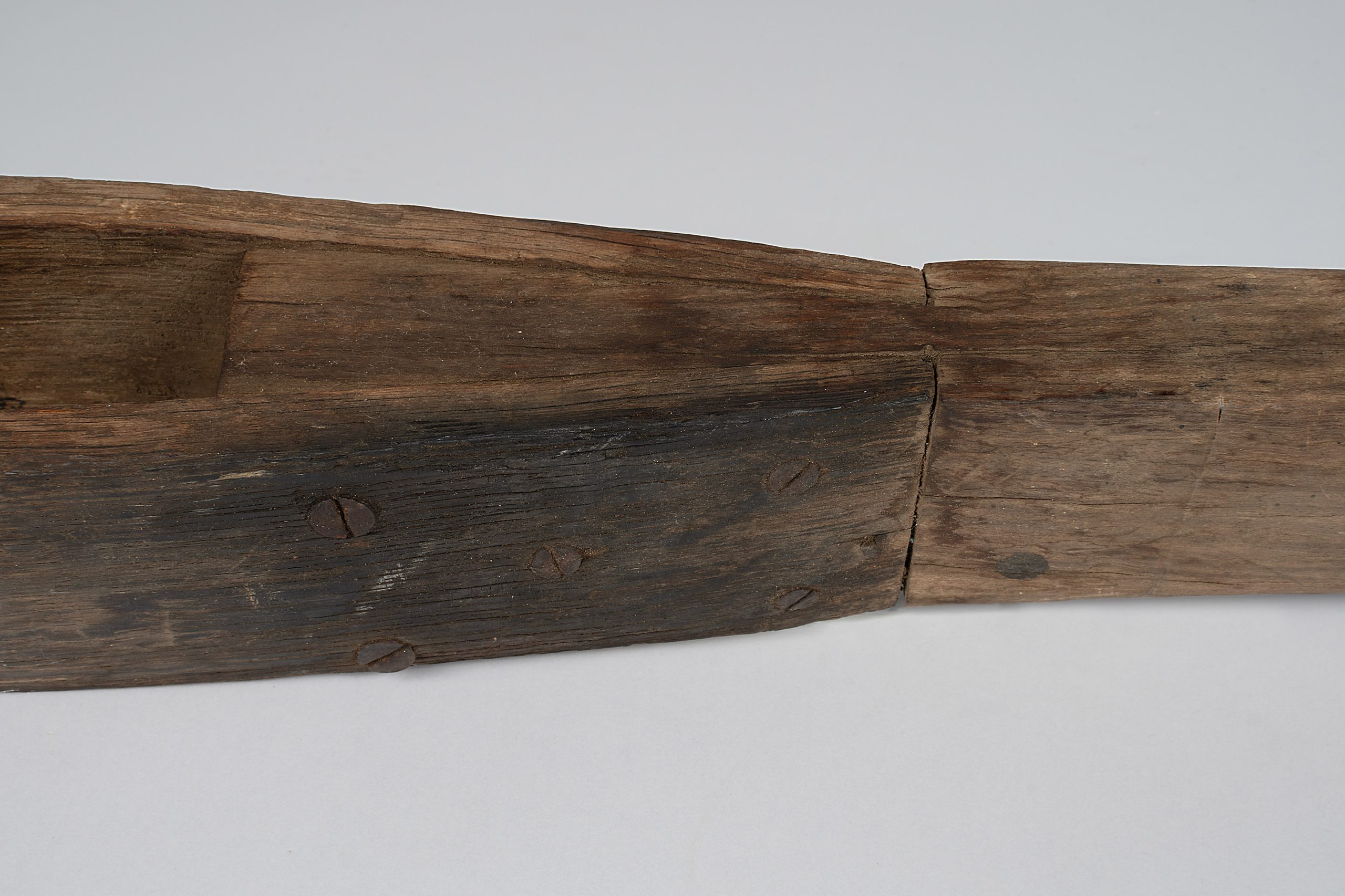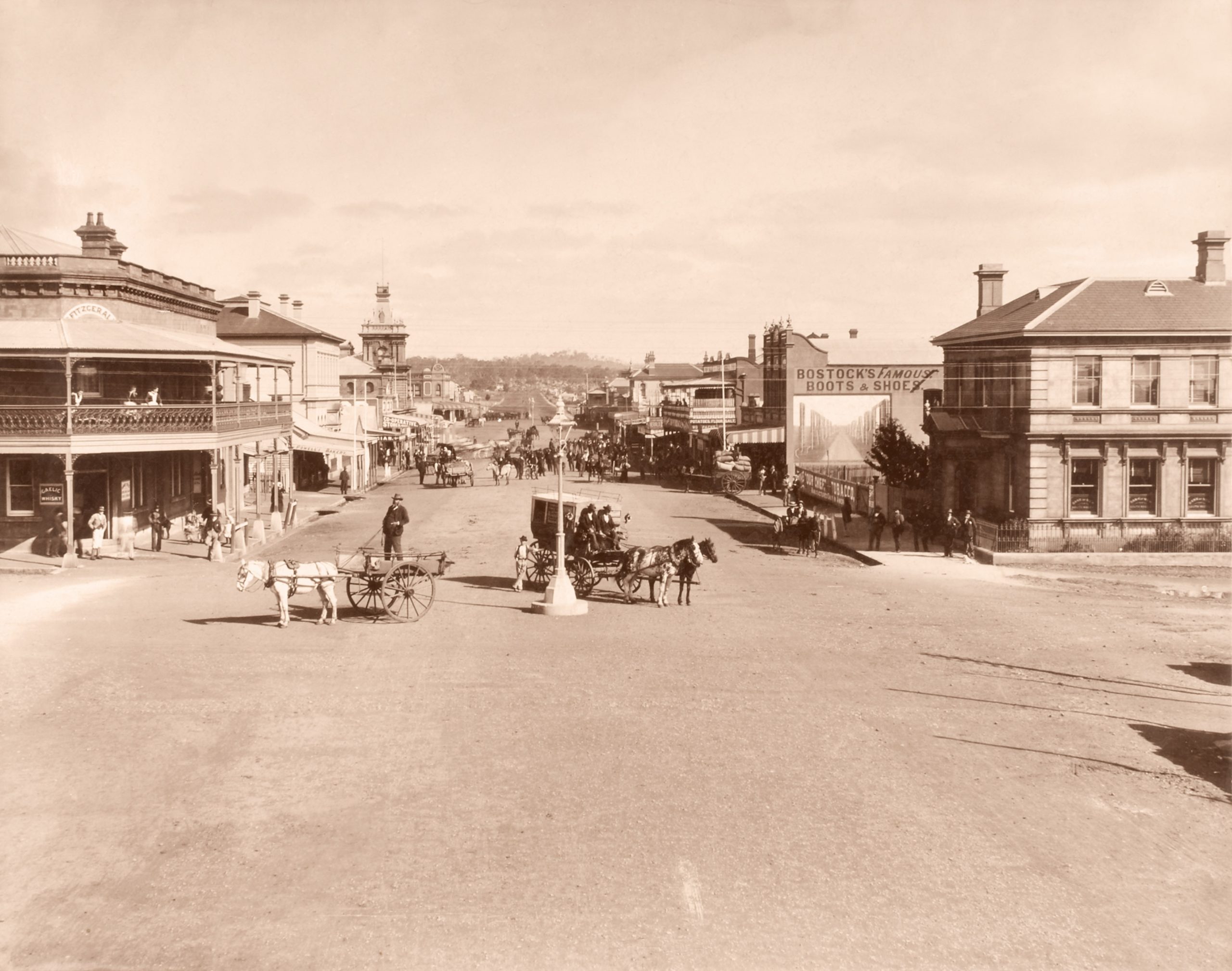Cradling the Clamp
When Horses Ruled the Roads
It’s hard to imagine that we once relied on horses and bullocks to take bulky produce to market, move heavy loads, and travel long distances. Back then, saddlers were essential because they made and repaired harnesses and leatherwork.
In the 1870s, John Priest (born c. 1851) was one of the first saddlers to open in Glen Innes, in northern NSW. His work was of ‘excellent quality’ and won many prizes at local New England shows. He was ‘meticulous’ in his craft and sourced leather specific for each project, bringing it from as far as Newcastle, 430 kilometres away.
Priest’s trade required lots of specialist tools such as edge shaves, half-moon knives, and pricking irons. He would also have used a saddler’s clamp similar to this one. The clamps came in a range of sizes and were designed so he could keep both hands free when working on a saddle or harness.
To use the clamp, Priest would have sat, cradling the clamp in his lap with the jaws resting on one thigh and the handle tucked under his other leg. He would have put a piece of leather between the jaws and lowered his leg to close the clamp, creating a vice to hold the work. His hands were then free to stitch the saddle he was working on.
Horses aren’t as essential to the everyday person as they once were, so some of the saddler’s specialist tools (like the clamp) have largely vanished. The craft of saddle making is also a dwindling art, continuing only as a highly skilled, bespoke trade.


